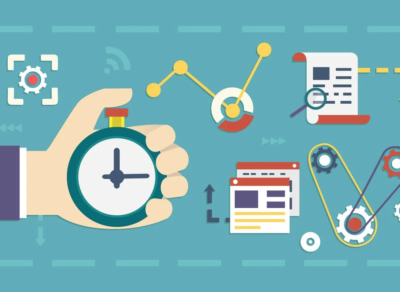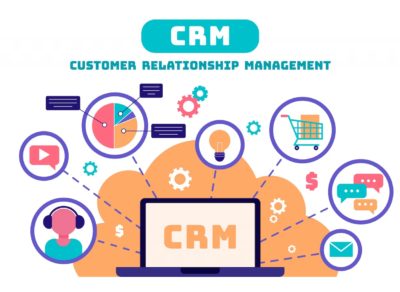
Unlock the secret of digital lending process flow
Digital lending is not a new or unfamiliar practice, and financial institutions are well-versed in the fundamentals. However, as technology advances and consumer preferences change, that concept becomes more complicated.
The Digital Lending Process refers to the series of activities designed by banks to move customers along the digital lending journey: from the application, onboarding, underwriting, disbursement, and repayment. It is a complex series of steps that necessitate careful planning and technological investment.
In this article, let us unlock the secret of digital lending process flow to better understand this technology solution.
What is Digital Lending?
Digital lending is a technology that enables financial institutions to increase productivity and loan profits while offering faster service at the point of sale. It enables prospective borrowers to apply for loan products from any internet-capable device in any location worldwide.
5 Steps Digital Lending Process Flow
Customer Acquisition
By combining digital marketing tools and digital onboarding channels, banks can attract new customers to their digital lending products. Customers can be verified using a technology known as an eKYC solution.

SMSs, SEO, online banners, and social media advertisements are examples of digital marketing tools. These tools are more concerned with strategy. Banks should have the right experts on staff who can diversify digital marketing efforts while keeping costs to a minimum.
Smartosc solutions : BACKBASE DIGITAL BANKING, BUY NOW PAY LATER, LOS, CDP, EKYC, DIGITAL ONBOARDING
Traditional SMS blasts have given way to more modern channels such as web apps, mobile platforms, and AI chatbots for digital onboarding.
Verifying customers’ identities was critical to the acquisition, especially for a risky service like lending. To automate identity verification, banks now use the eKYC (electronic Know-your-Customer) solution.
It removes the need for the customer to physically visit a location to submit documents for verification. Most eKYC technologies also allow access to public or private sector records, which can be useful when a bank is attempting to enrich its customer data.
Approval & Analytics
The ability to access more data and use that data to make faster, automated, and more accurate underwriting decisions is at the heart of digital lending.
Banks can now access data from an increasing number of sources, including the internal sales team, social channels, partners, credit bureaus, and even the government. Banks can quickly score clients and make credit decisions using advanced algorithms and analytics.
Banks are supplementing their own knowledge about a specific borrower with bureau data, social media information, and digital transactions (e.g. supplier payments, e-commerce payments, mobile money payments, etc.) to better understand individual behavior and provide access to previously rejected ‘thin file’ customers.
Loan Origination System (LOS) software is a type of lending software that automatically pulls customer data from relevant sources, scores their credit, and makes credit decisions with little to no human intervention.
Disbursement & Repayment

Banks disburse loans and collect repayments remotely via digital channels in digital lending. They are the banks’ online and mobile banking accounts. Partners’ channels, such as mobile wallets or e-commerce accounts, are also effective for loan disbursement and collection.
These cashless channels improve operational efficiency by eliminating unnecessary paperwork. Furthermore, they provide a clear audit trail, which can help banks prevent fraud.
In digital lending, repayment is made through the same digital channels, sometimes by auto-debiting the account.
Collections
Banks use data and algorithms to aid in the collection process.
Some companies use cutting-edge technology to monitor customer behavior and recommend personalized recovery strategies. A loan collection system is a type of software that can assist banks in streamlining disbursement and repayment.
It provides loan recovery, restructuring, and collection strategies. Loan Collection System ensures that no cases fall through the cracks by using notification engines, warning systems, and advanced features such as skip tracing and geo-fencing.
Customer Engagement
The final step in the digital lending process is customer engagement. Rather, it occurs throughout the loan cycle. This is due to the fact that good customer engagement acts as a motivator, nudges customers to progress along the digital lending journey.
By leveraging digital channels and customer data, it is possible to create an intuitive, convenient, and personalized customer experience. This is two-way communication with both inbound (borrower-to-lender) and outbound components (lender-to-customer).
Based on their behavior, lenders send personalized messages, reminders, and product offers. Customers can also easily access and manage their accounts, raise questions, and report issues or complaints. Simple SMS, call-center support, and the use of self-service online portals, chatbots, and in-app messaging are all examples of channels.
Conclusion
The lending market has changed dramatically in recent years. The traditional bank lending model is losing ground. With the introduction and development of new technological solutions, digital lending is capturing a sizable market share. To keep up, banks must become true digital lenders.
To get the best technology solutions to keep up with market trends, contact SmartOSC Fintech right now.


